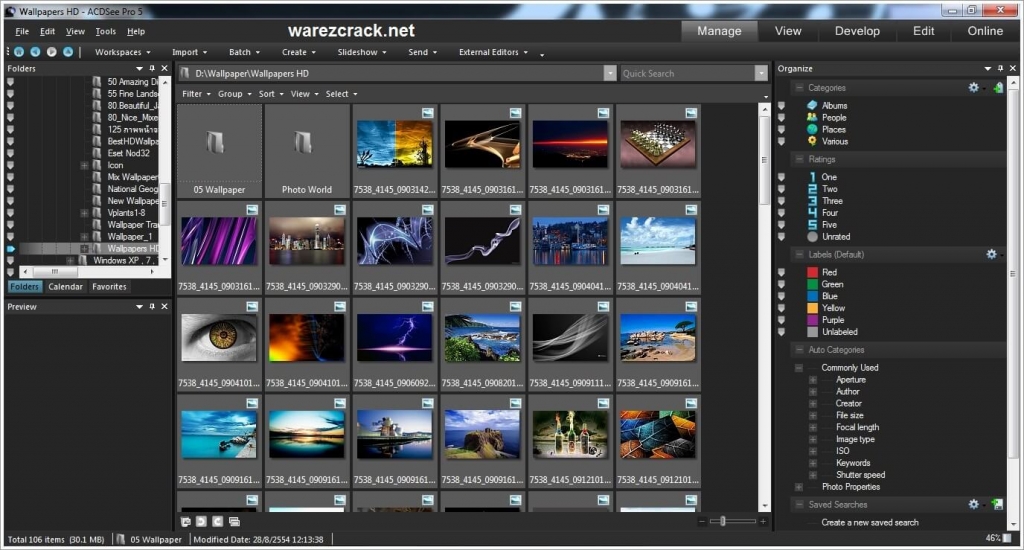
- ACDSEE PHOTO EDITOR 10 INTRO GUIDE HOW TO
- ACDSEE PHOTO EDITOR 10 INTRO GUIDE ANDROID
- ACDSEE PHOTO EDITOR 10 INTRO GUIDE FREE
ACDSEE PHOTO EDITOR 10 INTRO GUIDE ANDROID
But if you own an Android device, it might not be the best solution.īy contrast, you get free, unlimited photo storage on Google Photos, allowing you to automatically back up all images from your phone, computer and other devices. If you’re accustomed to Apple devices (and the service integrates nicely with Apple products) and are willing to splurge for a monthly fee, iCloud might serve your needs. Apple lets you share storage space on the 200-GB and two-TB plans with your family. For more space, you’ll pay a monthly fee: $0.99/month (50 GB), $2.99/month (200 GB), or $9.99/month (two terabytes).
ACDSEE PHOTO EDITOR 10 INTRO GUIDE FREE
It’s very well known, but it provides just five gigabytes of free storage to start for those with Apple devices, and just one GB if you don’t own one. For example, the pricing model is very different on just these four services (not to mention other photo backup apps). You’ll also want to be sure to drill down and examine the details of each service to find additional pros and cons. (Note: You’ll find this feature on other services, as well.) “You can never predict when a crash will happen or your phone will be stolen,” says Jill Duffy, a contributing technology editor who covers productivity for .Įach also offers free versions to back up your photos, although it’s generally just a small amount of storage space. One reason you should use them is that they all share an important feature: automatic backups. One of the most effective ways to back up photos on smartphones is by using one of several well-known cloud services, such as Apple iCloud, Google Photos, Amazon’s Prime Photos, and Dropbox.


Yet, despite its heritage and know-how, the company declared bankruptcy in 2012, shutting down its entire operation, including the Kodak Gallery, where many photographers had images stored. In fact, in 2001, it created an impressive photo-sharing and photo-storage site, called the Kodak Gallery. Yet, consider Kodak, which for decades functioned as a powerful and lucrative photography company. Upload images to an online backup service and you face a different problem: You might think using a cloud service from an established company - like Apple, Google, or Amazon - would be safe. Store images on a hard drive connected to your computer, and, as Ms. You also need to know that there’s no completely foolproof method to backing up your images. Unfortunately, preserving the original photo isn’t the only issue you’ll face when backing up your images. That’s also why you want to carefully choose a backup solution, whether it’s online or an external hard drive. That’s because when you back up your photos, you want to be able to retrieve an image file that is as close to, if not identical to, the original photo you captured on your phone or digital camera.

It’s why you might think you’ve backed up your image when uploading it to Facebook or other social media sites, but that’s not really the case.īut right now, most websites, including social media and even photo-printing sites, aren’t designed to truly store photos. However, it’s often difficult to visually detect if an image file has been altered, particularly on a smartphone’s small screen. It may digitally compress it, too, throwing out additional data important to image quality. When you post it, Facebook, in most instances, downsizes the resolution, or reduces the number of pixels to make it smaller. Now, say you upload that photo to Facebook. Since one million pixels is known as a megapixel, the resolution of your smartphone image is 12 megapixels. If an image you shot on your smartphone, say, is 4,000 pixels high by 3,000 pixels wide, it contains a total of 12 million pixels (the height multiplied by the width). Namely, image resolution.Įvery digital photo has a certain image resolution, which is the total number of pixels that make up a photo.
ACDSEE PHOTO EDITOR 10 INTRO GUIDE HOW TO
Before I explain how to back up your photos, it’s useful to understand one important aspect of digital photos that relates to storing them properly.


 0 kommentar(er)
0 kommentar(er)
